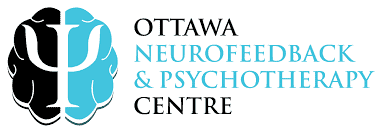Our clinicians use a variety of evidence-based therapeutic approaches to ensure the best fit for each individual. These approaches are like a toolbox, with different tools applied to address specific concerns. Each person’s treatment plan is customized based on various factors, including the nature of the issues and the individual’s suitability for the approach.
Our clinicians are proficient in
Cognitive Behavioural Therapy (CBT) is a type of therapy that focuses on how thoughts affect behaviours and emotions. The purpose of CBT is to help clients understand their common thought patterns and become more aware of the impact these thoughts have on their emotions and behaviour. CBT often involves “homework” where clients take note of certain reactions or write down their thinking patterns. While CBT is often used to treat depression and anxiety, it is a valuable therapeutic approach that can be helpful for all clients.
Dialectical Behaviour Therapy (DBT) is a type of psychotherapy that uses a cognitive-behavioural approach to help people learn new skills and strategies to build better lives. DBT focuses on changing problematic behaviour patterns through weekly sessions. These sessions aim to teach core skills, including mindfulness, distress tolerance, interpersonal effectiveness, and emotion regulation. DBT is particularly effective for individuals who struggle with intense emotions, self-destructive behaviours, and relationship challenges.
Acceptance and Commitment Therapy (ACT) is a mindfulness-based behavioural therapy that helps clients accept their inner thoughts and feelings rather than suppressing them. This approach enables individuals to confront their problems directly while employing effective methods to resolve them.
ACT uses six core processes to help clients develop psychological flexibility:
- Acceptance: Embracing all of your experiences, including unwanted ones.
- Cognitive Defusion: Noticing your thoughts and thinking processes without trying to alter them.
- Being Present: Allowing yourself to be fully aware of your experiences as they happen at this very moment.
- Self as Context: Getting in touch with your deep sense of self.
- Values: Recognizing what matters most to you and what you truly want your life to be about.
- Committed Action: Doing things that bring value to your life.
By integrating these processes, ACT helps individuals lead a more fulfilling and values-driven life.
Eye Movement Desensitization and Reprocessing (EMDR) is an effective trauma treatment, with most clients reporting positive effects after only a few sessions. This internationally recognized treatment method is used by thousands of therapists worldwide and was discovered by psychologist Francine Shapiro in 1987. EMDR integrates elements from various therapeutic approaches with eye movements or other forms of rhythmic stimulation to activate the brain’s information processing system. The goal of EMDR is to help individuals process traumatic events and reduce emotional distress.
EMDR is based on the theory that when someone is distressed by a traumatic event, their brain cannot process information as it usually would, causing the moment to become “frozen.” This means that recalling the trauma can feel as intense as experiencing it for the first time, as the images, sounds, smells, and feelings remain unchanged (EMDRIA, 2000). These persistent memories can negatively impact how a person views the world and interacts with others, potentially altering their self-perception. For example, an abused child might grow up believing “I’m not good enough.”
EMDR helps resume normal information processing of these “frozen” moments and the negative beliefs attached to them. After an EMDR session, the traumatic images, sounds, and feelings are no longer relived with the same intensity. While the event is still remembered, it becomes less upsetting (EMDRIA, 2000). Additionally, because the memory is integrated, the negative beliefs associated with the trauma can shift to more rational and realistic ones. For instance, an adult who felt “I’m not good enough” may start to recognize that the abuse was not their fault and may begin to believe “I am good enough.”
By helping individuals reprocess their traumatic memories, EMDR offers a pathway to healing and improved emotional well-being.
Brainspotting is an advanced technique evolved from EMDR, utilizing eye movements to release unprocessed trauma. Developed by David Grand, this approach is grounded in the theory that many mental and physical issues stem from stored traumatic memories and experiences. Through resource development and processing, clients can connect with and process stored information, facilitating the integration of experiences and emotions on a deep physiological level.
Brainspotting helps address trauma by identifying and processing these stored memories, allowing for profound healing and improved mental health. This technique is effective for various conditions, offering a pathway to recovery for those affected by past traumas.
Cognitive Processing Therapy (CPT) is an evidence-based treatment proven effective for individuals diagnosed with PTSD or struggling with stress symptoms associated with traumatic events. These events can include, but are not limited to, work-related trauma experienced by first responders, child abuse, rape, and major life-threatening accidents.
As a type of cognitive-behavioural therapy, CPT focuses on client goals, thoughts, emotions, behaviour, and physiological responses. This comprehensive approach aims to reduce trauma symptoms and improve psychological well-being. CPT uses a combination of assessments, psychoeducation, worksheets, and homework to help clients challenge and alter unhelpful beliefs and thoughts related to their traumatic event. Additionally, it promotes modifying behaviour by fostering a new and healthier understanding of their lived experiences.
To maximize the benefits of the CPT program, it is highly recommended that clients commit to 12 weekly therapy sessions.
Mindfulness-Based Psychotherapy is a therapeutic approach that helps you learn to accept your feelings, be present in the moment, and quiet your mind. This form of therapy can help you regain focus, increasing your appreciation and enjoyment of life’s experiences. By developing mental control, you may feel more capable of regulating your feelings, thoughts, and experiences. Research indicates that mindfulness-based therapy is particularly effective for individuals with depression and anxiety conditions.
Embrace mindfulness to enhance your mental well-being and find greater peace in your everyday life.
Psychodynamic/Analytic Therapy involves the development of a relational basis for exploring inner self and relationship experiences. It not only examines thoughts, feelings, and emotions like many other therapies but also helps individuals become more aware of their inner selves, including desires, expectations, and internal dilemmas that may lie beyond daily awareness. This therapy creates a safe environment with the therapist where you can freely explore your history and experiences. Topics often include early life relationships with parents or caregivers, family dynamics, community and cultural influences, and coping mechanisms that may stem from these experiences.
Common goals for entering psychodynamic therapy include addressing mental health issues such as anxiety, depression, and trauma, as well as broader objectives like expanding the ability to express and feel a range of emotions, exploring feelings of unfulfillment or emptiness, and enriching relationships. Establishing a flexible and secure relationship between client and therapist is crucial, often necessitating more frequent appointments if desired. While various approaches may be employed, connecting one’s developmental origins with their current experience of self and therapist is a hallmark of this approach.
Interpersonal Psychotherapy (IPT) is a modern, attachment-focused psychotherapy that aims to help individuals resolve interpersonal problems and achieve symptom recovery. It is an empirically supported treatment initially developed for depression, commonly applied to eating disorders, relationship issues, and mood regulation.
Within the therapist-client relationship, clients gain insight into themselves, their past and present attachment patterns, and acquire new strategies for fostering healthy relationships. IPT offers a brief yet effective approach to addressing various mental health concerns, emphasizing the importance of interpersonal dynamics in emotional well-being.
Gestalt Therapy is a client-centered approach that prioritizes understanding the present moment over past experiences. The term “gestalt” refers to wholeness, reflecting the belief that humans are best comprehended as integrated beings encompassing mind, body, and soul. In Gestalt therapy, clients explore their current experiences through their own perspective, integrating past influences into the present. This may involve techniques such as role-play, confrontation, and empty chair therapy to vividly evoke and address underlying issues. Gestalt therapy emphasizes the active expression of unresolved emotions like anger, pain, and anxiety as a means to achieve healing and personal growth.
Narrative Therapy offers a distinct approach to Psychotherapy, guiding individuals to define their stories beyond pathology or arbitrary diagnoses. This method enables us to view our experiences through a positive and constructive lens while externalizing our challenges. Through collaboration, therapists empower clients to explore their values and recognize their abilities in navigating difficulties. Externalizing problems allows for a broader socio-cultural understanding, enabling an objective approach to issues. Narrative therapy fosters self-compassion and cultivates a positive relationship with our challenges, making negative experiences more manageable. Particularly beneficial in couple’s or family therapy, it brings objectivity to conflicts. Additionally, it proves effective in addressing PTSD and mood disorders by promoting kindness and compassion towards oneself.
Sex therapy involves ongoing dialogue between client and therapist, conducted without personal touching in the office. Individuals often seek sex therapy when experiencing challenges in their sexual lives, such as difficulties with arousal, maintaining an erection, or painful intercourse. This specialized form of psychotherapy addresses concerns related to sexual function, intimacy, and sexual feelings. Therapists may provide education, talk therapy, homework exercises, and referrals for further exploration in individual or couples therapy.
What can sex therapy help address?
- Pain during intercourse
- Difficulties with arousal/orgasm
- Premature ejaculation
- Issues with intimacy/desire
- Out of control sexual behaviours
Solution-focused brief therapy (SFBT) is a short-term therapeutic approach focused on finding solutions in the present moment. Unlike traditional therapy, which delves into analyzing problems, pathology, and past life events, SFBT emphasizes identifying tools, setting goals, and developing a clear plan to manage symptoms and cope with challenges effectively.
Emotion-focused therapy (EFT) empowers clients to gain mastery over their emotions rather than being controlled by them. This therapy approach provides a safe environment for clients to identify, accept, and tolerate difficult emotions, enabling them to explore, comprehend, and effectively manage their emotional experiences.
EFT prioritizes enhancing awareness, acceptance, understanding, and transformation of emotions to facilitate meaningful change. Additionally, it equips clients with techniques to heighten awareness of their emotional needs.
Attachment-based therapy focuses on assisting clients in overcoming the impact of negative early attachment experiences. Therapists aim to establish a secure bond with the client, enabling them to communicate openly and explore how current emotions and behaviors relate to past experiences. Through attachment-based psychotherapy, clients discover new behavioral patterns and develop enhanced abilities to form meaningful connections in other relationships.
.
Prolonged exposure therapy (PET) is a widely used psychotherapy for post-traumatic stress disorder (PTSD). After traumatic events, individuals often experience unwanted thoughts, disturbing nightmares, depression, and hypervigilance, leading to avoidance of trauma-related thoughts, feelings, and triggers. PET is grounded in associative learning theory, addressing the association of environmental cues with traumatic events in the brain, leading to fear and anxiety upon encountering such cues.
PET employs imaginal exposure, where a therapist guides individuals in discussing and revisiting the trauma, facilitating the processing of associated thoughts and emotions. Additionally, in vivo exposure involves real-life interactions with safe stimuli that clients have been avoiding, structured through an “exposure hierarchy” based on distress levels. Over time, these techniques aim to reduce unwanted traumatic reminders and distress associated with recalling the trauma. Ultimately, PET seeks to empower individuals to re-engage with life safely, enhancing their ability to distinguish between danger and safety, and alleviating PTSD symptoms.
Internal Family Systems Therapy (IFS), developed by Dr. Richard Schwartz in the early 1990s, recognizes the complex internal dynamics within individuals. Like interpersonal relationships, different “parts” of the self interact, sometimes conflicting or causing distress. The compassionate, caring, and curious Self ideally guides these parts, but wounded parts may take over leadership when things go awry.
In IFS therapy, clients and therapists delve into the client’s inner world, identifying and understanding the various parts contributing to distress. The goal isn’t to eliminate parts, even the most painful ones, but rather to comprehend their roles and guide the Self back into a leadership role. This process facilitates healing and transformation, addressing the underlying causes of pain and dysfunction.
Sensorimotor therapy combines talk therapy with alternative forms of physical therapy, engaging with traumatic memories through attention to physical responses they evoke. Therapists employ techniques such as deep breathing and relaxation exercises to alleviate symptoms. This therapy recognizes the interconnectedness of mind, body, spirit, and emotions, acknowledging that past emotional and traumatic events manifest in bodily changes and language. The goal of somatic therapy is to cultivate awareness of the mind-body connection and utilize interventions to release tension, anger, frustration, or other emotions held in the body from negative experiences. This process aims to liberate individuals from the stress and pain of unconscious physical responses that impact daily life.
Art therapy serves as a valuable tool for therapists to assist patients in interpreting, expressing, and resolving their emotions and thoughts. Collaborating with an art therapist, patients delve into their emotions, comprehend conflicts or distressing feelings, and employ art to seek resolutions.
Play therapy is a structured approach utilizing a theoretical model to foster an interpersonal process. Trained therapists harness the therapeutic potential of play to aid children in preventing or resolving psychosocial challenges and achieving optimal growth. The eight guiding principles of play therapy encompass forming a warm therapeutic alliance, accepting the child, fostering a permissive therapeutic environment, reflecting the child’s expressed feelings, respecting the child’s problem-solving abilities, maintaining a nondirective approach, acknowledging therapy as a gradual process, and establishing realistic limitations.




